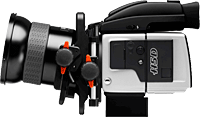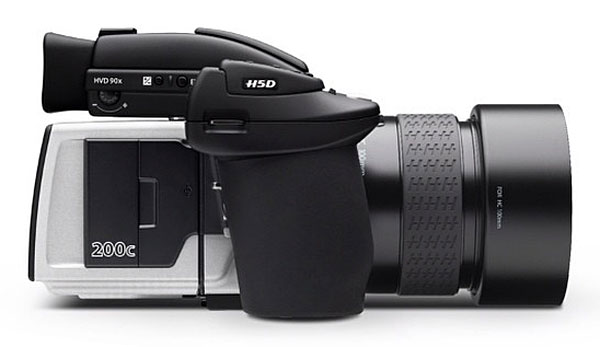Perfection for the pixel-addicted: 200-megapixel Hasselblad H5D-200c Multi Shot debuts
posted Thursday, August 21, 2014 at 10:09 AM EDT

With cameras offering 30, 40 or even 50 megapixels now relatively affordable, you might think that the pixel-addicted -- those photographers who need to shoot at extremely high resolution for archival purposes, high-end product photography, and so on -- would be satisfied. You'd be wrong, though. For some purposes, it seems, there's simply no such thing as too many pixels, and that's where Hasselblad's Multi-Shot series cameras come into play.
Hasselblad has been making Multi-Shot cameras for years, and the concept behind them is really rather straightforward. (In fact, many years ago we saw similar technology used by JVC to boost the resolution of consumer cameras.) In a nutshell, the technique is simply to capture and merge multiple photographs, moving the sensor ever so slightly in between frames. So long as your subject is completely static, each additional shot can be used to ascertain finer and finer details, and in Hasselblad's case up to six shots are used, depending on the model. (But therein lies the rub: This technique only works for completely static subjects.)

Now, the company has introduced a new Multi-Shot camera model -- and in perhaps the most bizarre place imaginable. Few sites would seem to have less relevance for resolution-hungry pros than Facebook property Instagram, home to millions of consumer photographers and intentionally lo-fi, digitally filtered photos. But be that as it may, the Hasselblad H5D-200c MS makes its debut in an Instagram post, a Multi-Shot twist on the existing H5D-50c. By merging multiple frames, the H5D-200c can capture four-shot, 50-megapixel stills with full color at every image location, or if you prefer, six-shot stills with a claimed 200-megapixel equivalent resolution.
The H5D-200c MS is actually not Hasselblad's first camera to offer a 200-megapixel Multi-Shot mode -- that award goes to 2011's H4D-200MS, which was CCD-based. It's certainly the company's highest-res offering to date from a CMOS chip, however, with a much wider sensitivity range of ISO 100 to 6,400 equivalents, and a maximum exposure time of 12 minutes.
Pricing hasn't yet been disclosed, but with the earlier H4D-200MS priced at around €32,000 at launch, we'd imagine its market is likely limited solely to those who don't have to ask to see the pricetag.
(via fstoppers)